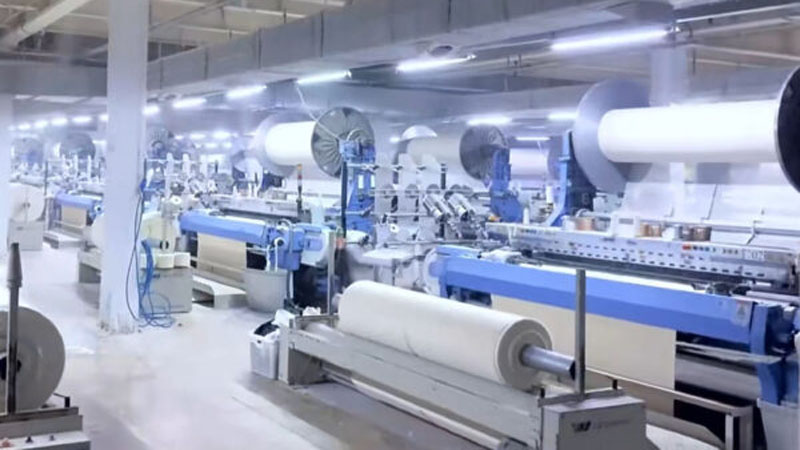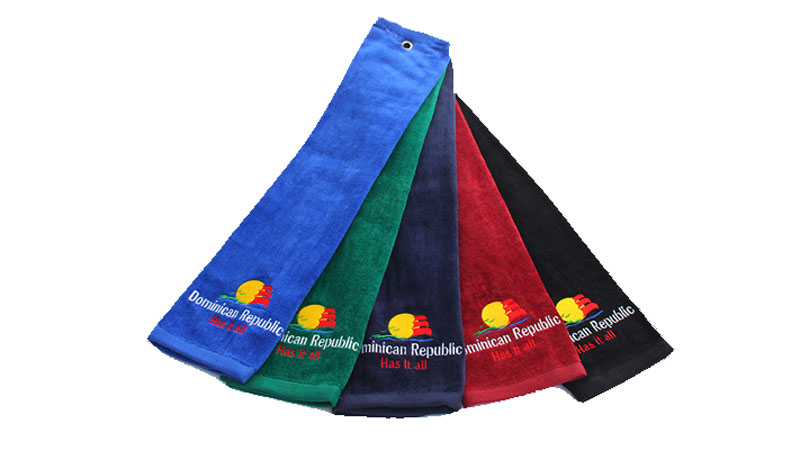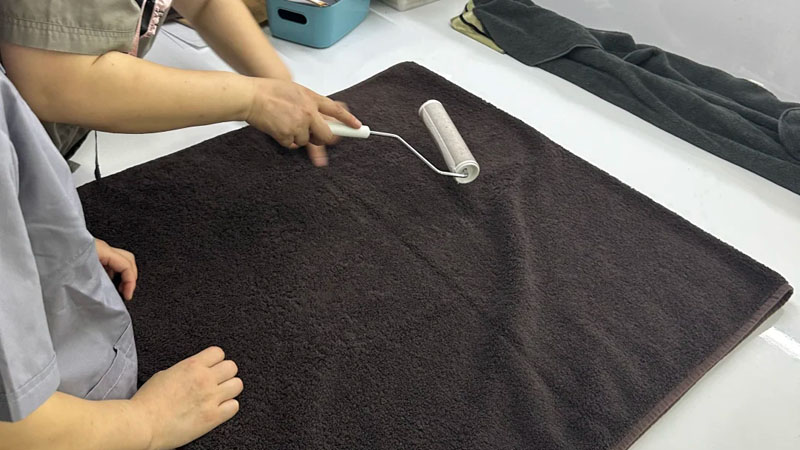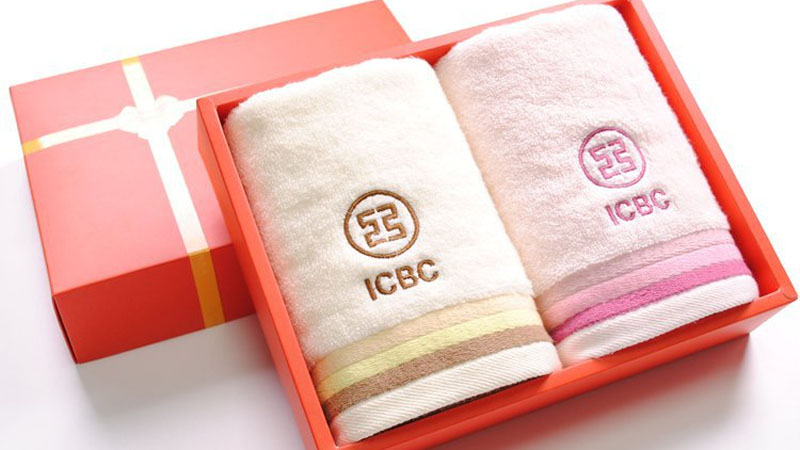Golfers notice details—from club heads to towels hanging on their bags. If your towel doesn’t perform, or the logo fades, your brand and credibility take a hit.
The golf towel production process includes yarn selection, weaving or knitting, dyeing, cutting and stitching, logo decoration, quality inspection, and final packaging. Each step demands careful attention to material, design, and durability to meet pro and amateur expectations.

Golf accessories must deliver both style and utility on the course. With so many customization options and performance standards, understanding the workings of golf towel manufacturing is key—let’s look at each stage that brings these towels from raw material to tournament-ready product.
What are the key steps in manufacturing a golf towel?
Missing any stage in production can ruin a towel’s softness, strength, or visual appeal—thorough process control is your foundation for quality.
Golf towel production flows from fiber and yarn selection, through weaving or knitting, fabric finishing, cutting, hemming, logo application, inspection, and packing. Each stage can alter the towel’s final appearance and function.
The essential steps are: selecting yarn (usually cotton or microfiber), weaving or knitting, dyeing, cutting/sewing, personalizing logos, quality control, and packaging for shipment.

Overview Table: Golf Towel Production Stages
| Step | What Happens | Key Controls |
|---|---|---|
| Yarn Selection | Choose fiber, spin to size/strength | Fiber type, evenness, twist |
| Weaving/Knitting | Create base fabric (terry, waffle, etc.) | Density, pile, surface |
| Dyeing/Coloring | Apply solid or pattern color | Colorfastness, evenness |
| Cutting & Hemming | Cut fabric to size, sew edges | Straightness, durability |
| Decoration/Logo | Embroider, print, or patch | Thread type, accuracy, fasten |
| Inspection & Packing | Inspect, fold, pack for shipping | Finishing, cleanliness |
Every step affects softness, absorbency, and visual branding—mistakes here lead to product returns or poor reviews.
What materials and weaves are best for golf towels?
Supply chain shortcuts or wrong material can mean scratchy, low-absorbent towels or fading designs that let customers down.
Golf towels are most often made from high-absorbency terry cotton, waffle microfiber, or cotton-microfiber blends. Terry and waffle weaves each offer unique textures—terry excels at water absorption; waffle is lighter, dries quicker, and lifts dirt well. Choice depends on performance needs and desired branding.
Top golf towel materials are: 100% ring-spun cotton (for traditional terry), high-density microfiber (for waffle or suede finish), or a blended weave for balance.

Golf Towel Fabric Comparison Table
| Fabric Type | Feel | Absorbency | Drying Speed | Print Options | Durability |
|---|---|---|---|---|---|
| Terry Cotton | Plush, classic | High | Medium | Embroidery, print | Excellent |
| Waffle Microfiber | Lightweight, textured | Medium-High | Fast | Sublimation | Very Good |
| Cotton/Microfiber | Balanced, soft | Medium | Fast | Embroidery | Very Good |
For logo clarity and functional wiping, match weave type to target clients—pros often choose dual-sided towels, casuals value easy maintenance and lower price.
How does personalization and branding work in golf towel production?
A golf towel isn’t just utility—it’s a moving, visible ad for brands, tournaments, or clubs. The wrong logo process can lead to fraying, ugly threads, or washed-out prints.
Logos are applied by embroidery, screen printing, woven labels, or heat transfer. Embroidery is most premium, lasting for years with deep color. Sublimation prints suit microfiber, allowing edge-to-edge photo detail. Proper colorfastness testing and thread selection prevent design issues.
Select the right decoration technique: embroidery for texture and permanence on cotton, sublimation for vibrant, full-print designs on microfiber, and use colorfast, UV-tested threads or inks.

Logo & Decoration Technique Table
| Method | Best For | Durability | Visual Style |
|---|---|---|---|
| Embroidery | Cotton, blends | Highest | 3D, bold classic |
| Sublimation | Microfiber, light colors | High | Photo/color edge |
| Screen Print | Large runs, simple art | Good | Flat, graphic |
| Woven Label | Subtle branding | Excellent | Minimal, pro |
Ensure partners pre-test on fabric swatches to confirm logo placement, color fidelity, and wear resistance.
How is quality controlled during golf towel manufacturing?
Overlooking QC causes towels to ship with missed stitching, color bleed, or weak grommets—a single batch can damage a year’s customer trust.
Inspect towels at each stage—for weight, weave consistency, dye fastness, accurate sizing, logo clarity, and seam strength. Final random sample checks and third-party audits ensure international standards for golf and retail.
Robust QC means checking fabric weight, absorbency, stitching, color fastness, and logo attachment—add pull and washing tests to minimize returns and brand risk.

Golf Towel Quality Control Checklist
| Checkpoint | What to Inspect | Standard/Spec |
|---|---|---|
| Weight | GSM or oz/yd² measurement | Within ±5% spec |
| Weave/Pile | Density, height, uniformity | Smooth, even, absorbent |
| Color | Dye fastness, even coverage | AATCC/ISO standards |
| Logo | Centered, attached, no loose threads | Clear, colorfast |
| Size/Shape | Correct dimensions, straight edges | ±2% tolerance |
| Edge/Grommet | Reinforced, secure, rust-free | No fraying, solid |
Communicate exact specs and testing requirements with your supplier, and include photos of approved samples before production runs.
What packaging and finishing details matter for golf towels?
Good towels can still disappoint if poorly packed—messy folding, cheap grommets, or generic packaging reduce perceived value and impact shelf appeal.
Golf towels are usually folded, rolled, or tri-folded with brass or zinc alloy grommets and carabiner hooks. Branded hang tags, wash care labels, and retail-ready bags add a professional finish.
Specify folding method, hardware (grommet, hook), wrapper design, and barcoding to give your golf towels a high-value, polished look for retail or event giveaways.

Packaging and Finishing Table
| Detail | Standard Options | Brand/Market Value |
|---|---|---|
| Folding | Flat, rolled, tri-fold | Uniform, shelf presence |
| Grommet Type | Brass, zinc, plastic | Durability, color match |
| Carabiner/Hook | Alloy, plastic, color trim | Easy attach, upscale vibe |
| Tag/Bag | Hang tag, zip poly, box | Gift-ready, retail-ready |
Request final approval photos before shipment to confirm finishing aligns with other premium accessories in your collection.
Conclusion
From yarn choice to logo application, every step in golf towel production shapes the product’s feel, function, and reputation. With transparent process oversight and smart branding, a golf towel moves from being just a utility to an extension of a golfer’s personal brand—and your company’s promise of quality.
Professional Insights from Airswimwear’s 15 Years of Expertise
- Always insist on yarn origin and spinning specs—using ring-spun or combed cotton with verified quality reduces pilling and maximizes softness and life span of the towel.
- Test both embroidery and sublimation on intended fabrics to confirm logo clarity, colorfastness, and prevent puckering or fading, especially after multiple washes.
- Set clear QC standards (weight tolerance, pile density, logo attachment) and request pre- and post-production samples for every order, particularly for custom tournaments or club runs.
- Upgrade finishing—use high-grade grommets/hooks, detailed care labels, and premium packaging to elevate brand value and encourage reorders in B2B golf and retail spaces.
FAQs
What is the best fabric for a golf towel: cotton or microfiber?
Cotton offers extra absorbency and classic feel; microfiber dries faster, lifts dirt, and handles edge-to-edge print best. Choose based on your target golfer’s needs.
How do you keep embroidery from unraveling on golf towels?
Use tight, premium thread, reinforce backing, and test post-wash. Partner with skilled embroiderers and inspect every batch.
Can I print photo-quality logos on golf towels?
Yes, with sublimation on microfiber or light-color blends. For cotton, use high-res silk screen or limited digital print with prep.
How do you attach a towel to a golf bag?
Most towels have a grommet and carabiner/hook—request brass or zinc hardware for durability and color match.
What size is standard for golf towels?
Standard size is usually 16”x25” (about 40x65cm), but tri-folds or player towels can vary. Confirm with your audience or course’s needs.
Can golf towels be made using sustainable materials?
Yes—look for GOTS or BCI cotton, recycled microfiber yarns, and eco-friendly dyes. Ask suppliers for certifications and test eco samples for durability.
.png)







-1024x337.png)